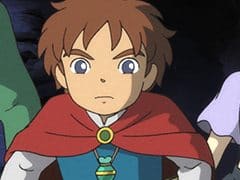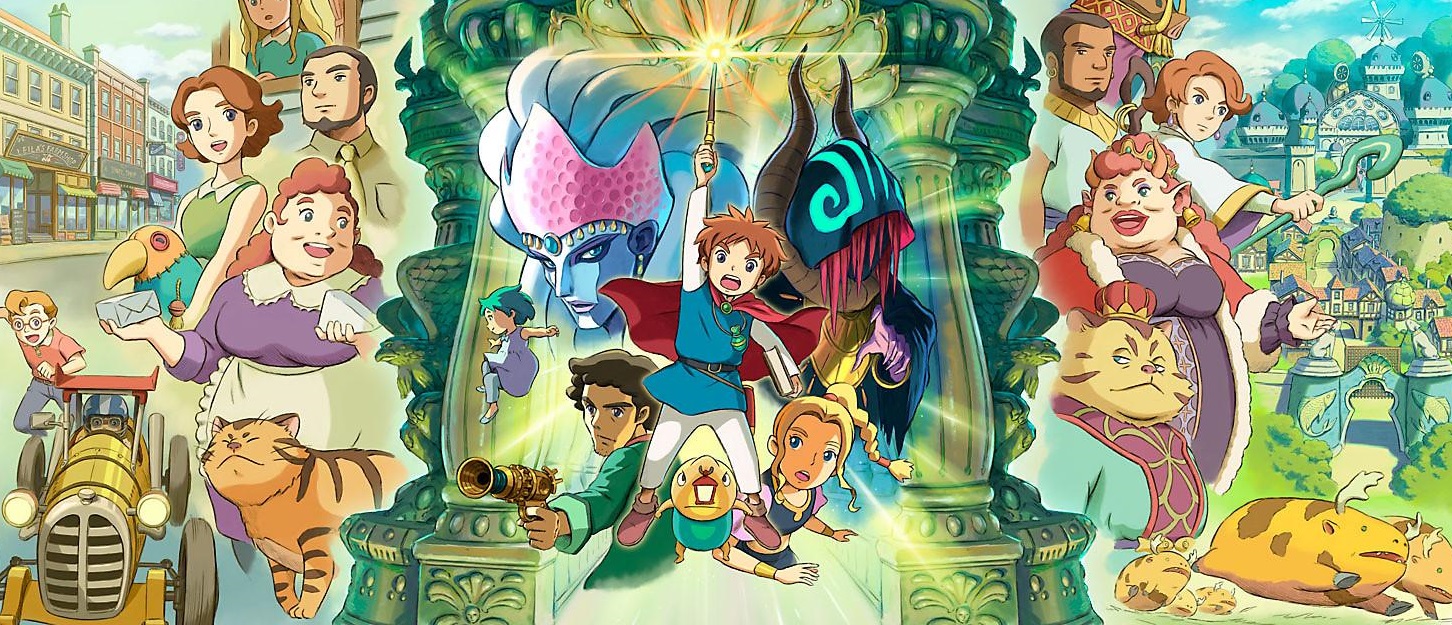You can trust VideoGamer. Our team of gaming experts spend hours testing and reviewing the latest games, to ensure you're reading the most comprehensive guide possible. Rest assured, all imagery and advice is unique and original. Check out how we test and review games here
I’d like to think that everybody reading this is familiar with the works of Hayao Miyazaki and Studio Ghibli, but as much it pains me to think it, I doubt that’s the case. A quick lesson, then: Studio Ghibli is an animation studio based in Tokyo, and is responsible for some of the finest animated films you’ll ever lay your eyes on. My Neighbor Totoro, Spirited Away and Princess Mononoke are just three titles you might (and indeed should) have heard of, but its entire catalogue spans nearly 20 titles. If you ever get the chance, I wholeheartedly recommend checking out Grave of the Fireflies, which will make even the burliest of men bawl like a baby.
Before I digress into sentimental babble about my favourite Ghibli works, simply know this: they’re weird, they’re wonderful, and they’re ludicrously imaginative. If you haven’t seen a Ghibli film, make it your mission from this moment forth to do so; it’ll stand you in good stead for Ni no Kuni – the first interactive Ghibli experience developed by one of my all time favourite developers, Level 5. It was originally intended as just a DS title (which is releasing in Japan this December), but a PS3 version has since been confirmed. Ni no Kuni: Shiroki Seihai no JoÅ , which literally translates to “Second Land: The Queen of White Sacred Ash”, has been causing quite a stir at this year’s TGS. Given my love for both Ghibli and Level 5, it won’t surprise you to learn that this was the first thing I sought out after arriving on the show floor.
The demo was split into two halves; one which was plot-driven, set in a town, and the other combat-focused, set in a forest. I opted for the latter, presuming my inability to read Kanji would ruin the conversation-heavy first option. After seeing the game in action for the first time, I had to put down the controller in order to scoop my jaw up off the floor. Ni no Kuni is mesmerizingly beautiful. The look and feel of the Ghibli films has been flawlessly translated to a graphical style, and I noticed that anybody walking past the game as I played was compelled to stop and watch it for a few minutes. If you thought the likes of Wind Waker and Tales of Vesperia did a good job of cel-shading, just wait ’til you feast your eyes on this.
The demo takes place in a forest of sorts. Your character, the 13-year-old Oliver, is followed around by a strange little creature that sports a lantern as a nose ring. Shizuku, as he’s known, is the epitome of Ghibli. As you progress through the winding path of the forest, he trots along behind you much like Pikachu does with Ash. The Pokemon comparison doesn’t end there, with combat itself not entirely dissimilar to Nintendo’s critter-battling classic. It’s important to note that it’s not turn-based, however, and utilises an active time system where each attack requires a waiting period. Oliver stands at the sidelines issuing commands much like a Pokemon trainer would, but I suppose that’s where the similarities end.
I must once again stress the fact that, due to the language barrier, I had absolutely no idea what was going on. I was rotating through commands on a wheel in the bottom left hand corner of the screen. Selecting one would prompt a little dude with a sword to attack his enemies. It’s worth noting at this point that this little dude was not the lantern-nosed Shizuku, but something else. He was more bipedal; small and disgustingly cute with a huge smile plastered across his face. I’ve since heard him referred to as an ‘Imagine Fighter’, a being that has been summoned into existence by Oliver. It could well be that he is one of many vassals that can be drafted into battle, but I was unable to learn much more than this from the demo.
Pressing the L1 button changes the command wheel, presenting combat options for Oliver. Oliver will never get involved in combat directly, but isn’t afraid to open up his spell book and cast a few spells here and there. The DS version will actually come with a hardbound book, with spells inside that can be referred to as you play. You won’t get this accessory with the PS3 version, but magic will still play an instrumental role in battle. I have no idea what spells I was casting, but it was clear to me that none of them were attack based. All of the ones I saw appeared to be either healing moves or stat buffs, but this is only an educated guess.
In true JRPG style, the demo draws to an end with a hulking great big boss battle. The beast in question was clad in strange armour, with antlers sprouting from his head and a face like the apocalypse. The smile on my little warrior’s face refused to wane, however, and he valiantly jumped into battle without fear for the consequences. After dealing enough damage to the brute, he ditched his shield, discarding it like an unwanted toy. Soon after, Shizuku appeared from the sidelines, lifting up the unwanted shield (which is about four times bigger than he is), and throwing it at the enemy like a Frisbee. After taking advantage of his dazed state, the beast is finally brought to its knees; my team whooping and cheering in celebration.
Ni no Kuni oozes with Ghibli charm, and boasts some of the best cel-shading in recent memory – perhaps ever, in fact. As with many titles I’ve played over TGS, the language barrier prevented me from fully appreciating what was going on, but this didn’t stop me from falling head over heels in love with it. With any luck I’ll get my hands on a localised version of the game in the near future, and many of the points I’m hazy on right now will become clear. It’s day one of the show for me at time of writing, but I can say with all conviction that this is my game of TGS so far.
Ni no Kuni is scheduled for release in 2011.
Ni no Kuni: Wrath of the White Witch
- Platform(s): Nintendo DS, Nintendo Switch, PC, PlayStation 3, PlayStation 4
- Genre(s): Family, Fantasy, JRPG, RPG

/https://oimg.videogamer.com/images/08ae/ni_no_kuni_4.jpg)






